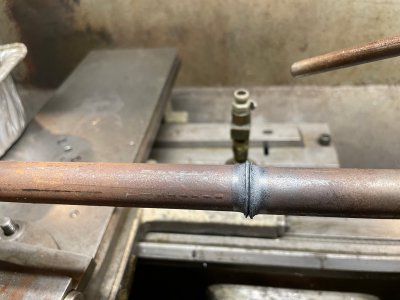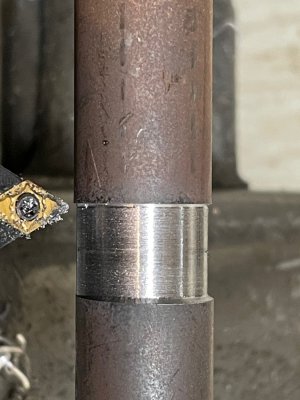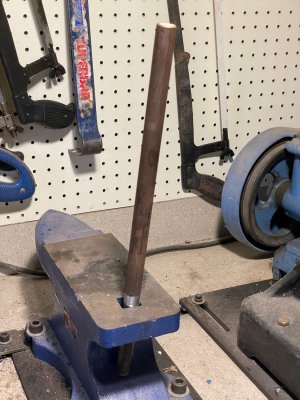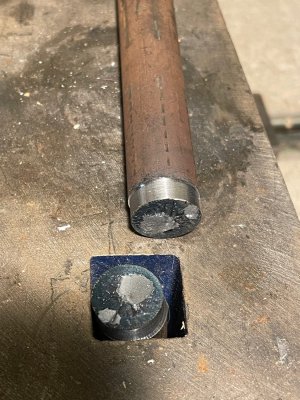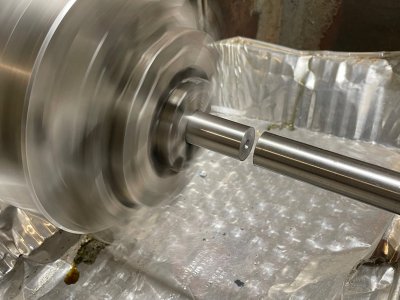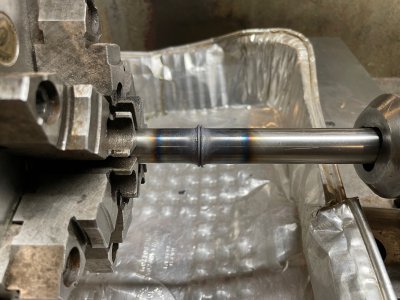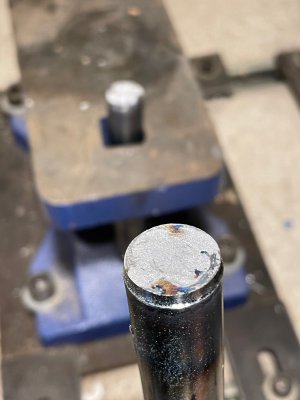- Joined
- Nov 24, 2014
- Messages
- 3,179
Here is another approach to the issue.
Neither the big end of the screw or the handle look to be very pretty.
Let's call the big end of the screw "the hub" (random name).
Make a new hub, but make it in two pieces. Leave some OD stock for final turning after welding.
One piece is the portion nearest the screw, with the retaining groove. Make it about .25" short of the hole for the handle. ID thread it through (or bore it through) for the new screw (tight fit). Chamfer both the hub part and screw and weld the he11 out of them.
Face off the hub/screw weldment end and chamfer the hub OD for welding to the other part of the hub.
Make the other part of the hub long enough to finish the hub length and chamfer it for welding.
Weld.
Turn the hub OD and face to finished dimensions.
Cross drill the new hub for a new handle.
Beautiful!
Neither the big end of the screw or the handle look to be very pretty.
Let's call the big end of the screw "the hub" (random name).
Make a new hub, but make it in two pieces. Leave some OD stock for final turning after welding.
One piece is the portion nearest the screw, with the retaining groove. Make it about .25" short of the hole for the handle. ID thread it through (or bore it through) for the new screw (tight fit). Chamfer both the hub part and screw and weld the he11 out of them.
Face off the hub/screw weldment end and chamfer the hub OD for welding to the other part of the hub.
Make the other part of the hub long enough to finish the hub length and chamfer it for welding.
Weld.
Turn the hub OD and face to finished dimensions.
Cross drill the new hub for a new handle.
Beautiful!


